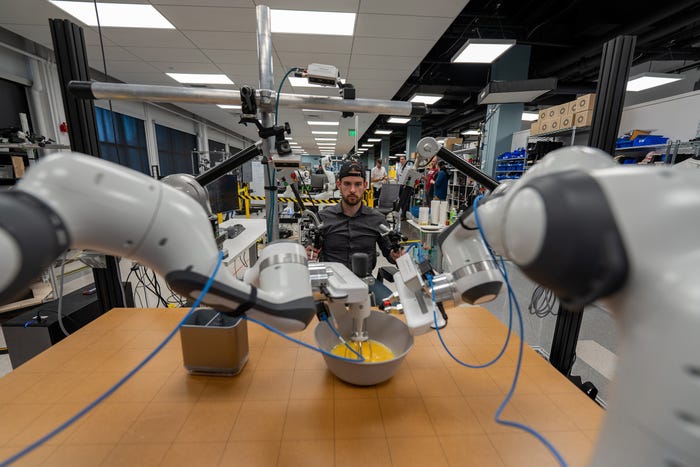Toyota Revolutionizing How Robots Are Taught
The breakthrough allows robots to learn how to perform tasks by being shown how to do them

The research arm of one of the world’s leading automakers says it has made a major breakthrough when it comes to teaching robots dexterous skills.
The Toyota Research Institute (TRI), which has offices in Massachusetts and California, claims it has devised a method that allows robots to learn how to perform tasks by being "shown” how to do them, negating the need for hundreds of hours of sophisticated, complex code to be written.

As well as significantly accelerating the process, the new tech has opened up a pathway for robots to fulfill much more complicated tasks than what we have become accustomed to.
The new technique sees robots pick up behaviors via haptic demonstrations from a human teacher, combined with language descriptions, before employing what TRI calls its “Diffusion Policy,” based on generative AI, to comprehensively learn the skill.
According to TRI, a task can often be learned overnight by the robot, and perfected from just dozens of demonstrations. It adds that the new method is delivering “consistent results.”
As a video released by TRI illustrates, the process is enabled by a human teacher demonstrating a specific task by teleoperation, with levers and handles providing haptic feedback. This helps establish a sense of touch for the robots, and the Diffusion Policy is then able to learn the behavior over a matter of hours.
“The tasks that I’m watching these robots perform are simply amazing – even one year ago, I would not have predicted that we were close to this level of diverse dexterity,” said Dr. Russ Tedrake, vice president of robotics research at TRI.

Already 60 new dexterous skills have been taught, including previously problematic tasks such as using tools, pouring liquids and peeling vegetables. TRI has set a target for hundreds more to be learned by the end of the year, and thousands by the end of 2024.
As Dr. Tedrake explained, the breakthrough could have significant implications.
“The approach holds great promise for creating what we call large behavior models,” he said. “Just like large language models have revolutionized chatbots, these behavior models will allow robots to perform useful work in ways never thought possible before.��”
According to Tedrake, there is more to come.
“We anticipate the next breakthrough will be when we have trained the robots with enough dexterous skills that they are able to generalize, performing a new skill that they have never been taught,” Tedrake said. “To realize this, we are building a robust curriculum for robot learning – essentially a kindergarten for robots.”
The improved functionality will, says TRI, increase the scope for robots to interact with humans in more varied ways – allowing them to provide support even in constantly evolving environments.
Like what you've read? For more stories like this on robotics and emerging technologies, sign up for our free daily email newsletter to stay updated!
About the Author
You May Also Like








